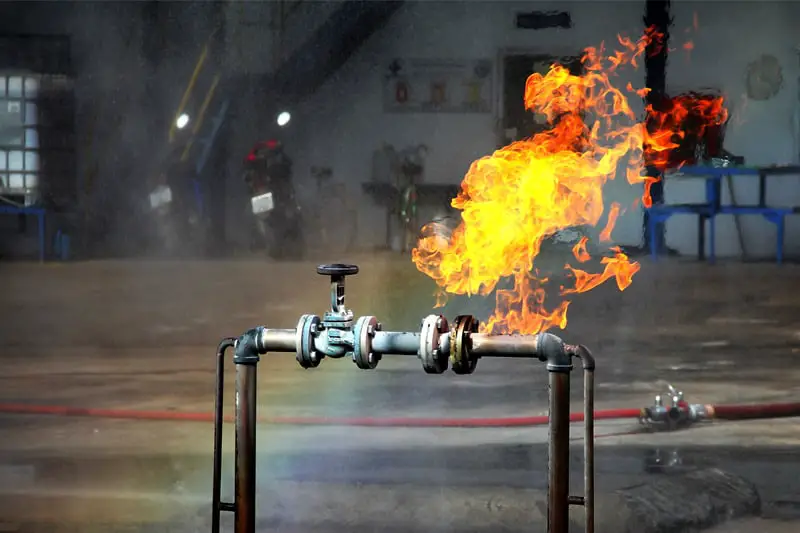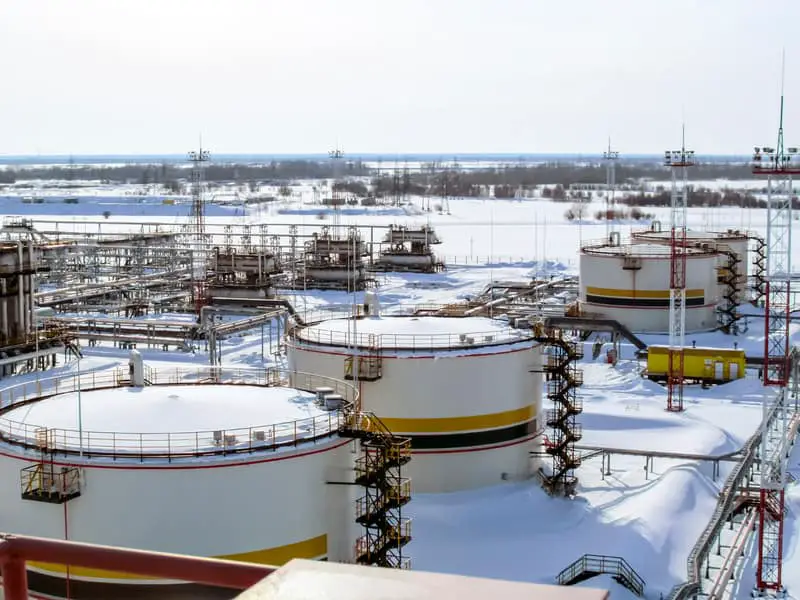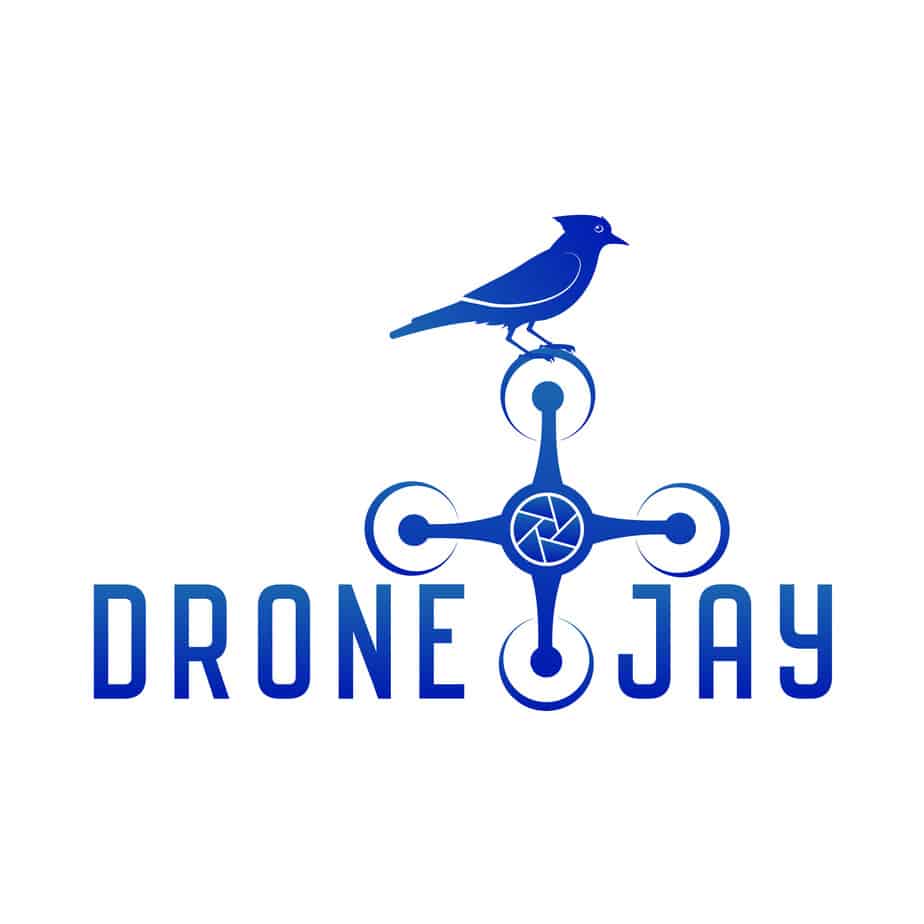Gas leaks are among the most common and dangerous challenges that oil and gas industries have to deal with. Still, detecting gas leaks started to become a less troubling obstacle by the interference of drone technology. It has made the detection process faster, safer, and cheaper than ever.

Yes, a drone can detect a gas leak, and compared to conventional methods, drones can detect leaks faster than humans with more accuracy and it is much safer. Workers don’t have to go to incident locations and get exposed to dangerous gases anymore. In addition, the whole process can be done through remote monitoring with higher accuracy and efficiency. Furthermore, drones can get to remote and difficult-to-reach locations and provide routine maintenance.
History Of Gas Detection
Before all the advanced technology and sensors people would simply grab a wet blanket and a match. They would walk down into a mine or area and move the flame around. Hoping it would not ignite a pocket of gas, but if it did the wet blanket would provide a mild protective barrier.
Then it evolved to using a canary. If the bird in the cage dropped dead they knew they had to get out of there and fast! Now there are handheld devices with an electrode that can accuratlely measure a low volume of gas. I remember when I was a kid we had a gas leak behind our dryer. You could smell that “rotten egg” smell and a technician came out with a hand held gas meter. He pinpointed the leak using the meter and fixed it.
However, the handheld meters still put us in potential harms way. We don’t know how strong it is until one becomes dangerously close. Also the time it takes to find the leak is limited to how quickly one can walk around and narrow the area with the handheld detector.
Enter gas detecting drones….problem solved.
How Do Drones Detect Gas?
Drones rely primarily on aerial detection. They can be used with pipelines, oil wells, and producing facilities. The devices fly over the area of inspection at a certain height to collect information.
To collect needed data such as images, videos, and locations, there are a number of sensors, cameras, and other devices that get attached to the drone. Among these are gas sensors, thermal cameras, and GPS devices.
The aerial sensors that the drones hold emit a laser that gets reflected back to the device’s laser absorption sensor. Then, it will filter this signal and analyze all the received data to detect the wavelengths and exact rate of the gas leak. Taking thermal images also adds to the accuracy of the drone’s information and the identification of minor leaks.
Process of Using Drones to Detect Gas Leaks
The process of using drones to detect gas leaks starts from getting the right drone platform. Then integrating the correct sensors and camera that do the bulk of the work. Finally, the needed software/programs are the last essential step in the process for a perfect Gas detection drone.
What Kind of Drones Can Detect Gas?
As using drones for industrial applications started to spread, manufacturers took major steps towards improving their devices. Still, as of now, there are no drones especially fabricated for gas leak detection.
But of course, commercial drones of well-established manufacturers are the base platform used for that purpose. The main devices concerned with detecting gas leaks are the attached sensors and cameras.
A Drone platform used to detect gas leaks should be sturdy enough to carry the needed special sensors such as gas sensors and visual and thermal cameras. It’s also essential for it to endure extreme weather conditions. Moreover, a drone for such a task would need a suitable battery system and a strong motor in order to last for as long as needed.
The DJI Matrice 600 Pro is among the drones that can be used for gas leak detection. It has a suitable loading capacity, a battery management system, and a Pro flight controller which gives you precise control of the drone and provides it with stable flight performance. All of which makes it suitable for various industrial applications.
The DJI 210 Matrice Drone is another sought-after product. This drone has a rugged design, anti-collision beacon, power onboard devices, as well as a time sync system. This system is designed to align all of the camera, the GPS, and the controller together, in addition to any attached payloads or accessories.
The DJI 300 RTK is the most recent commercial drone added to DJI’s collection. It boasts 55-min flight times, 15 km range, -20°C – 50°C Operating temperature, and smart track features. Not to mention the dual operators feature that allows teams to hand off control to another pilot on the scene or in another location.
What Sensors are Used in Gas-Detecting Drones?
The core of the gas-detecting process is the technology that is utilized. These technologies determine the accuracy of the process, efficiency, versatility, and range of the detector.
PERGAM’s Detection System
PERGAM is a Swiss manufacturer and one of the leading providers of gas leak detection systems. Its system includes many applications for inspecting tanks, monitoring emissions, gas testing, and calculating the concentration of the emitted gas.
It specifically focuses on methane and uses a laser set at a specific spectral range and a sensor to measure the reflection. It can work up to 30m above the leaks. It takes the readings and instantly logs them into the onboard data logger and relays the info to the control system where it can be accessed in real-time.
It is an accurate and good tool for surveying systems and collecting data. It has a simpler process than some of the following sensors.
FLIR’s MUVE C360
The MUVE C360 is FLIR’s first versatile multi-gas detector. It comes as a detector with built-in software that can be integrated with most commercial drones. It has a Photoionization Detector (PID), Lower Explosive Limit (LEL) detector, and an 8-channel sensor that can monitor many types of chemical hazards and combustible gases, including, Carbon Monoxide, Chlorine, Oxygen, Nitrogen Dioxide, Hydrogen Sulphide, and Sulphur Dioxide.
A rescue crew could potentially rush into a situation and only be prepared or expecting one specific gas resulting in a potential disaster. However, the MUVE 360 can catch something that they were not expecting and allow the crew to bring the proper PPE into the scenario.
Therefore, this detector has the ability to improve the safety level of the whole gas detecting process. It also has an adjustable alarm system that enables the control to give priority to chosen types of gases over others.
It integrates seamlessly with DJI’s control and monitoring platform. It is a futuristic and exciting technology that is sure to save lives.
First responders are constantly seeking better and safer ways to do their jobs, and from the moment the FLIR MUVE C360 arrives in the market, the chemical and gas monitoring process will change forever. In the time it normally takes first responders to don proper equipment, the C360 has already arrived on scene, tested samples, and located the source of a hazard.
Jeff Frank, Senior Vice President at FLIR
AILF U10
The AILF U10 is a sensor designed by DJI partner company AILF Instruments and focuses on Methane. It is compatible with the DJI commercial platforms such as the M200 series. It has a range of up to 100m and is a lightweight specific solution. Receive data in 25 ms with a sensitivity as low as 5 ppm.
Viper Vantage OGI
Viper Vantage is a system that comes with the UAV, camera, software and hardware. It utilizes the FLIR G300a Optical Gas Imaging camera. The system is available to buy, lease or subscribe. The platform/drone has a max flight of 16 min with a payload. This is lower than what we might see on other professional DJI rigs, however, if the cost is a factor this system may be perfect for you.
The ABB Ability™ Mobile Gas Leak Detection System
ABB’s mobile gas leak detection system is a drone-based system that is suitable for all gas and oil facilities. The system detects if the methane gas is naturally occurring from the environment or from leakage in wells or pipelines.

The system’s sensitivity is 1000x more accurate than conventional tools. It adds to the system efficiency and creates simple reports of the gas leak rate, location, and wind data.
What Software is Used in Gas-Detecting Drones?
Several companies have been working on providing software solutions and applications to improve the automation of drone. This can be helpful for companies that want to do a routine gas inspection along pipelines or factories. The data can be collected and the preprogrammed flight plan executed in a matter of minutes. To name a few Softwares that can help:
DroneDeploy’s Linear Flight App
DroneDeploy’s Linear Flight app is designed for planning complete flight routes. It’s available for organizations that use drones to inspect long infrastructures such as pipelines.
It shows maps and images updates in real-time. It can also detect potential leakage areas and prevent the accident from happening altogether.
Sky Eye Innovations’ Softwares
Sky Eye Innovations is a Sweden-based company that provides software solutions in the field of thermal imaging. By instant analysis of thermal imaging data, it improves the results and reports of the drones’ sensors. It also adds to the accuracy of the whole process.
What Companies Use Gas-Detecting Drones?
Many companies have started using and providing drones for detecting gas leaks. With such focus, oil and gas industries started investing in these drones in the long term. Many manufacturers also worked on developing drones to fit for such tasks.
Ravan Air
Ravan Air is one of the companies that provide programmed drones for detecting methane gas leaks. These drones are able to discover gas leaks and measure their rate. Ravan Air’s drones are also armed with thermal cameras for a more accurate and detailed inspection.
Acecore Technologies
Acecore Technologies offers its Acecore’s Neo drone for gas and oil industries. Its drones are suitable for gas detection in refineries and installations. These drones have gas-detection cameras that offer a real-time view of the location. Moreover, the drone’s sensor can detect around 100 different types of gases.
Companies Success Stories
Many companies have found using drones for detecting gas leaks a highly successful attempt for being a faster and cheaper alternative that keeps their workers and the environment safe. Many of these companies have shared their success stories about using drones technology instead of conventional ways.

The English gas company BP is among those that use the drones technology to detect gas leaks. It works on measuring and reducing gas emissions for oil and gas companies. It uses gas cloud imaging and streams data live for accuracy and efficiency.
The Oklahoma-based Trinity Services also affirms that using drones for gas detection has improved its industry. It has reduced the gas and oil companies’ clean-up costs by 90%. Moreover, the company used drones to detect saltwater leaks in pipelines.
ULC Robotics is another company that provides drone detection services. In addition to detecting gas leakage and delivering reports, their system indicates the leakage rate. It also provides an interactive Google Earth file for tracking the incidents’ locations
To Conclude
The question is no longer can a drone detect a gas leak? We should be asking, which drone can do it better?
Using drones technology to prevent gas leaks has proven to be a better alternative in the gas industries. Routine inspections can identify small leaks before they become big. Drone technology provides a faster detection method and damage containing process. It also reduced the expenses of detecting a leak. Companies no longer have to go through the massive and costly clean-up process that results from gas leaks.
Moreover, using drones resulted in reducing the human interaction rate. The drones erased the risk previously imposed on workers’ lives in leaking locations. This technology also offered the possibility of knowing about early or possible leaks detection. Such a step can highly reduce the amount of negative impact that oil and gas industries impose on the environment.
